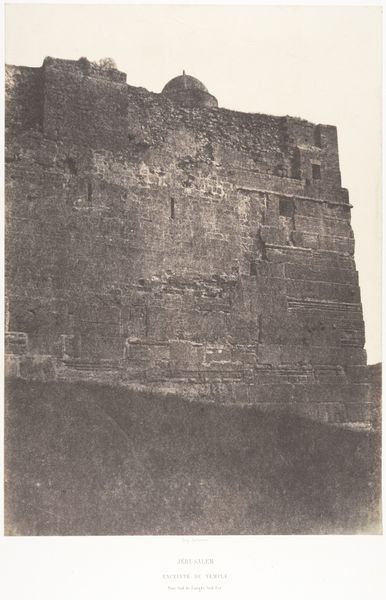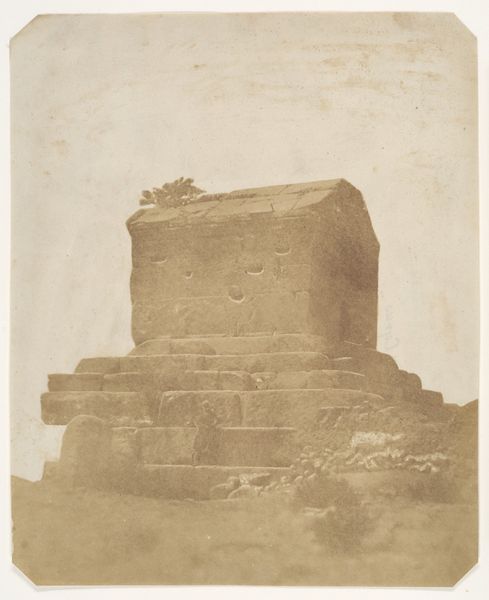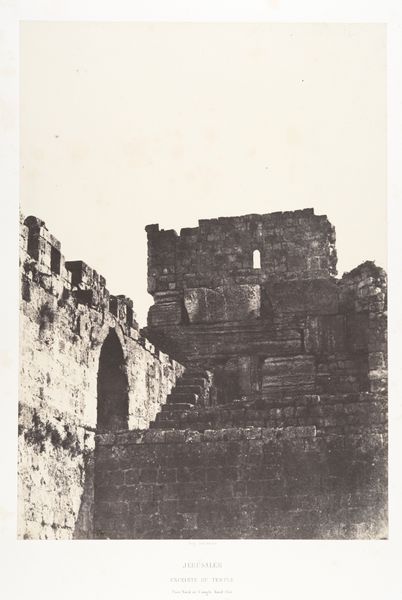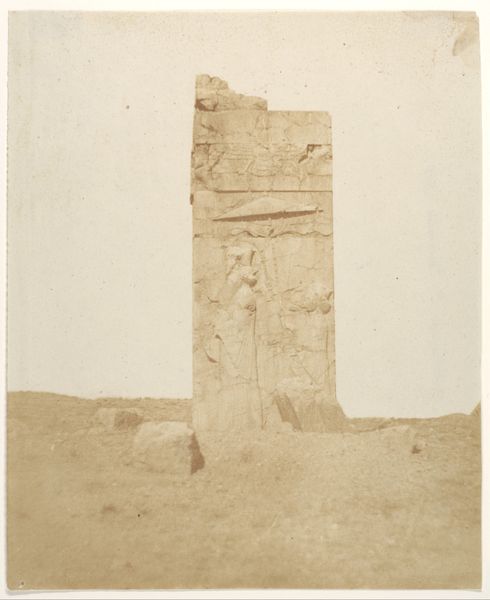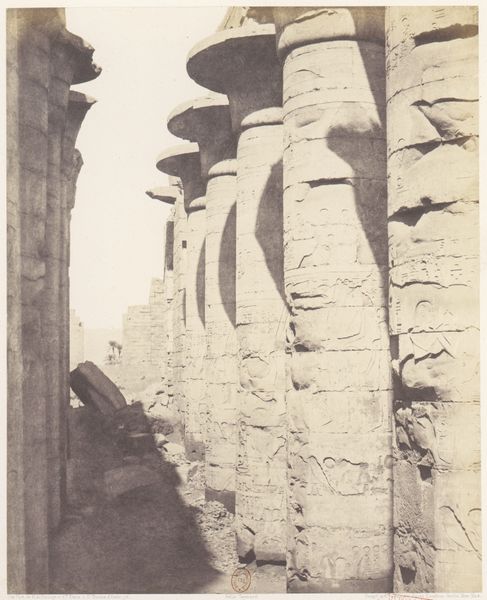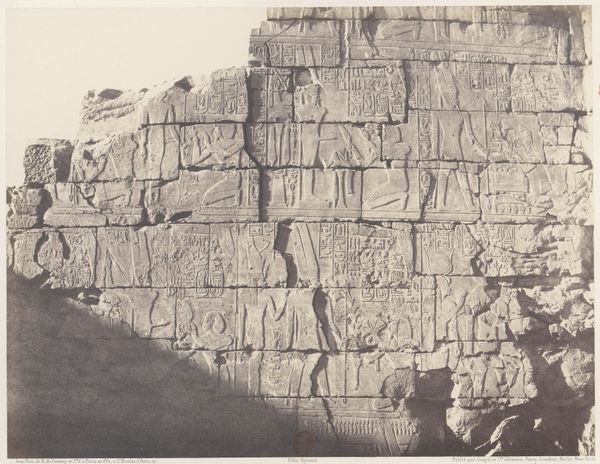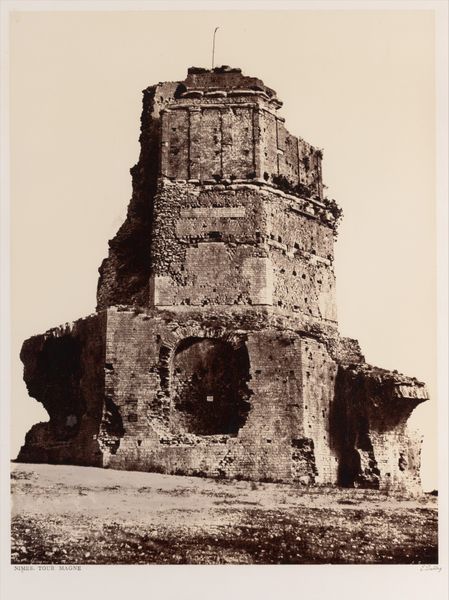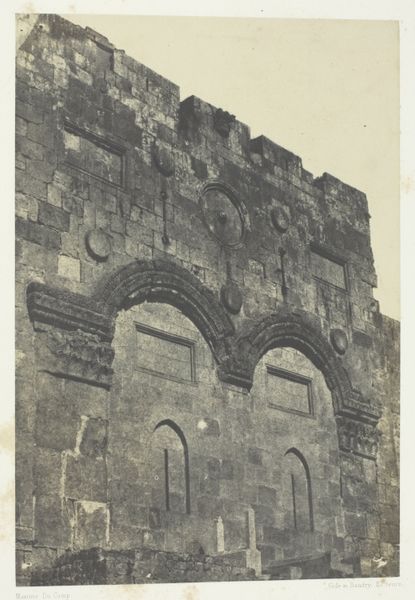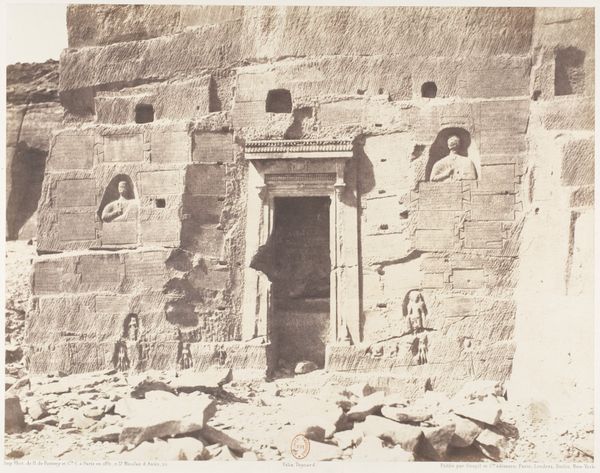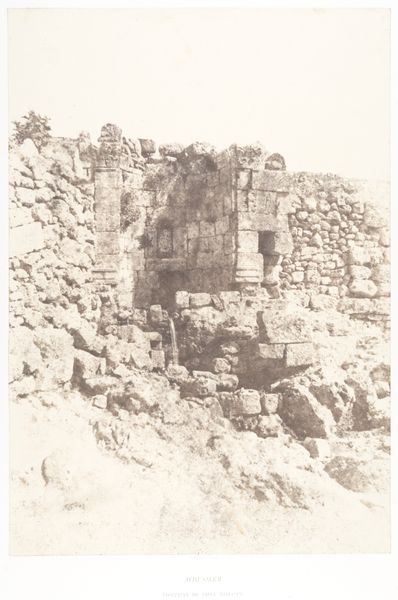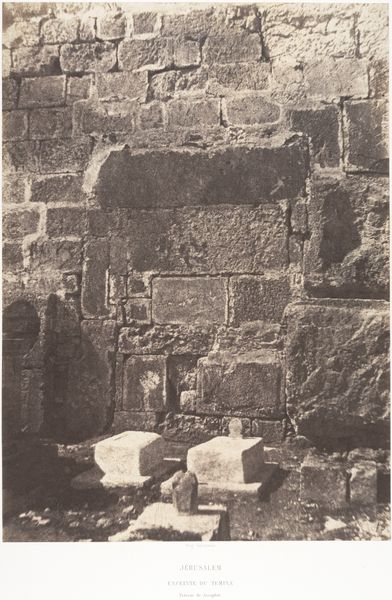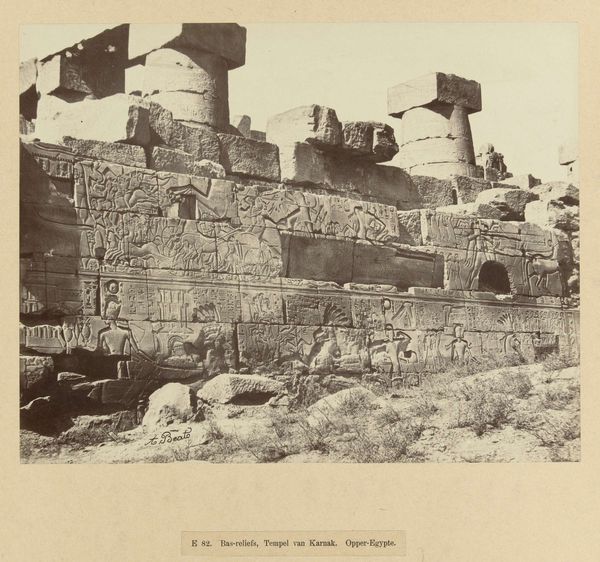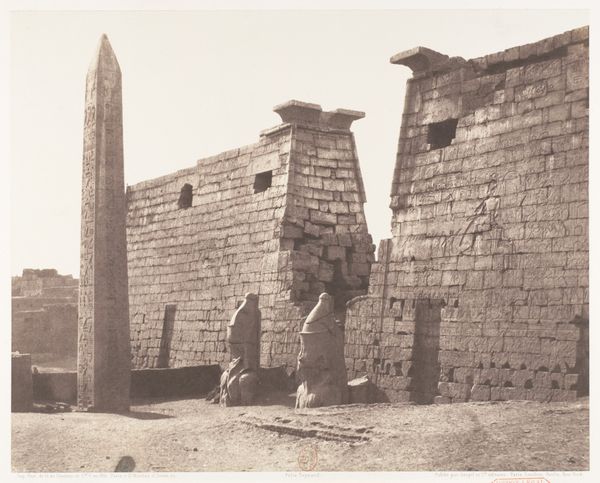
Jérusalem, Enceinte du Temple, Face Est de l'angle Sud-Est 1854 - 1859
0:00
0:00
print, photography, architecture
# print
#
landscape
#
photography
#
ancient-mediterranean
#
orientalism
#
cityscape
#
architecture
Dimensions: Image: 33 x 23.5 cm (13 x 9 1/4 in.) Mount: 60 x 44.7 cm (23 5/8 x 17 5/8 in.)
Copyright: Public Domain
Editor: Here we have Auguste Salzmann's photograph, "Jérusalem, Enceinte du Temple, Face Est de l'angle Sud-Est," taken sometime between 1854 and 1859. It’s an image of the Temple Mount, and I’m struck by how the monochromatic palette really accentuates the imposing geometry of the wall. What do you see in this piece? Curator: Immediately, I am drawn to the texture. The rough, uneven surface of the stone blocks creates a powerful sense of physicality. Consider how Salzmann’s deliberate composition, framing the wall at this acute angle, enhances its monumental presence. Note also the interplay of light and shadow. Do you see how it models the surface, revealing the depth and variation in the stonework? Editor: Yes, I notice how the light emphasizes the layered construction and different sizes of the stones, like it’s exposing its history, its past. Is there something to be said about the choice of medium? Curator: Precisely! Photography, in its nascent stages, provided Salzmann a unique opportunity to objectively record the textures and architectural forms with unprecedented clarity. The choice is itself a powerful statement about the artist’s intent to offer an unadorned representation. Think about how that contrasts with, say, romantic landscape paintings of the era. The photograph favors structural and material analysis. Editor: I can see that now. I hadn't thought about the way photography changes the artist’s relationship with the subject, towards a more analytical rendering. Curator: Indeed. Reflect on the sharp contrast to paintings of that period that emphasized artistic flourish and expression of feeling. This image emphasizes raw structural components in light. How does this consideration change your appreciation for it? Editor: It gives me a greater appreciation for the artistic decisions related to this photograph! Instead of simply documenting history, the artist is using visual elements to communicate an appreciation for architecture, depth and materiality. Thank you for sharing that insight! Curator: It has been my pleasure, particularly with so insightful an interlocutor.
Comments
No comments
Be the first to comment and join the conversation on the ultimate creative platform.
